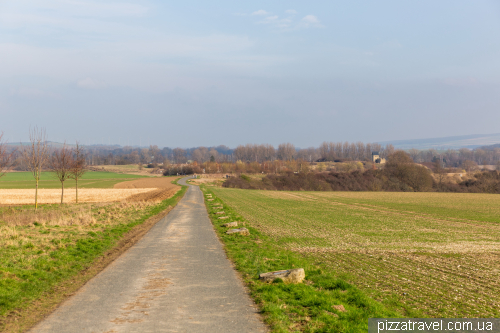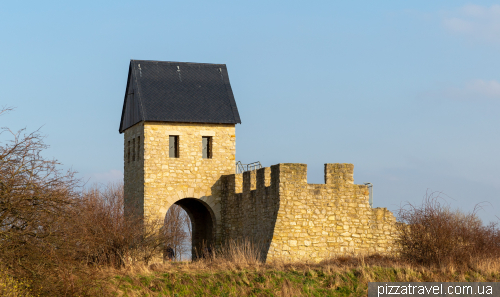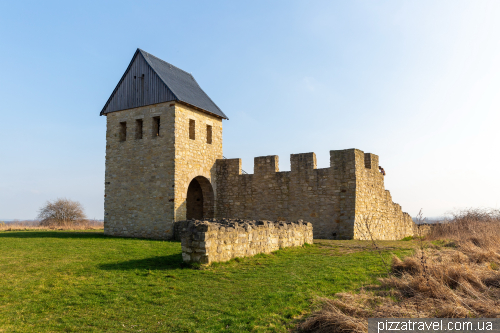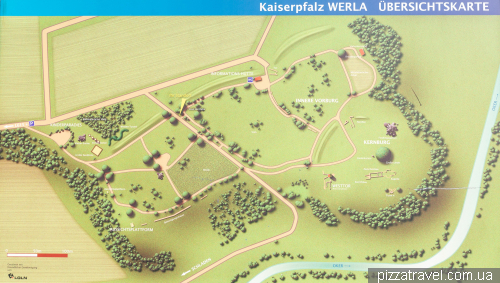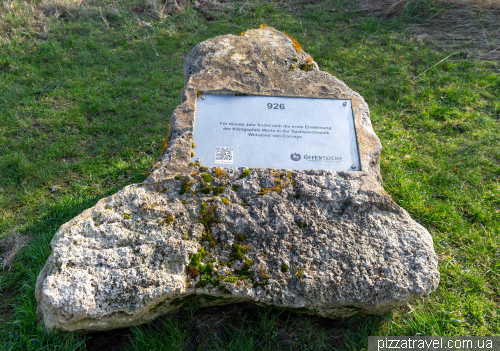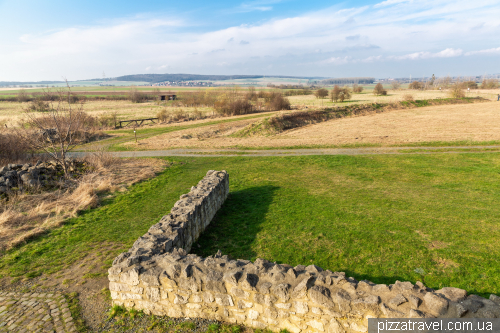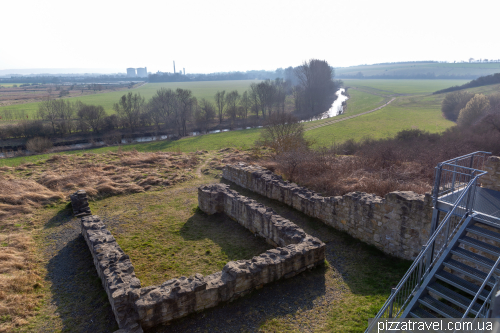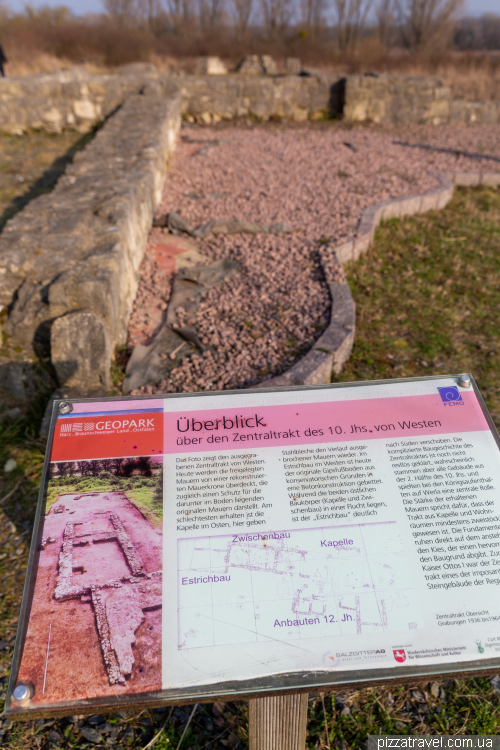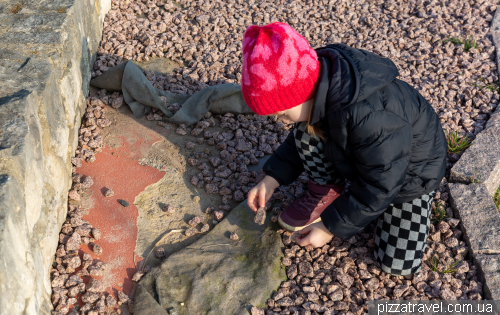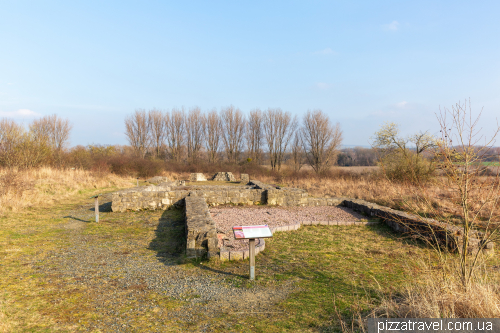The earliest buildings of the complex date back to the 9th century. At that time, a kind of fortified cattle yard was built. A ring wall surrounded several simple wooden buildings.
At the beginning of the 10th century the complex was transformed into a fortified palace. The first written records date back to 924 or 926 when King Henry I stayed here. Between 924 and 1013, at least 14 visits by various kings are recorded. On several occasions the succession to the throne was decided in Werla.
Traces of settlement can be found up to the fourteenth century, but by 1550 at the latest Werla had fallen into disrepair. There was even a chapel until 1817, although its origins were no longer known to the locals. With the disappearance of the last visible walls, the memory of the royal palace disappeared for a while.
That is, it turned out to be a situation when the palace was known from written sources, but its location was lost. The palace was searched for decades and finally found in 1875. The first excavations began in 1934, and in those years, as you remember, the country's leadership was very fond of various archaeological sites. Therefore, the help of the army aviation was even obtained, which for the first time in history used stereophotography. At that time, the results were considered sensational, as the photographs revealed a complex measuring 600 by 600 metres.
The archaeologists were in a hurry and made a number of dating errors because of the enormous pressure exerted on them by the National Socialists, who deliberately called Werla ‘the cradle of the First Reich’. Indiana Jones is already somewhere close.
Since 2010, the archaeological park has been open to the public and the excavations have been officially completed.
Getting there: parking 52.038389, 10.540667, then 1 km on foot.
